Seltzer Vs Sparkling Water: What's The Difference Between Them?

There are so many bubbly waters on the market, and more are appearing every day — plain or flavored, cheap or pricey, in tiny cans or big bottles, some caffeinated and some even alcoholic. They all seem to be called different things, too. Take seltzer and sparkling water, for example. Both are water, both have bubbles. Are they two terms for the same thing? Or are they totally different products?
Turns out, the answer to that question is somewhat complicated. Water feels like one of those things that shouldn't be hard to figure out, but when bubbles are thrown into the mix, suddenly you need a research assistant to understand all the different types. This guide takes a deep dive into seltzer and sparkling water to explore what similarities and differences there might be, and what sets them apart from other types of bubbly waters. It may not turn you into a fizzy water expert or a water sommelier, but it will help demystify a few of the most common styles of bubbly water, so you know what you're getting in bars and restaurants, and at the grocery store.
Read more: 17 Discontinued Sodas We Aren't Getting Back
What Is Seltzer?
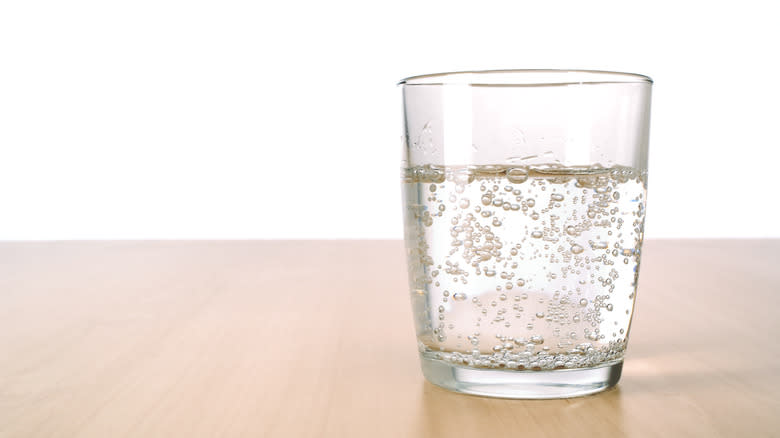
The word "seltzer" has a very interesting history. A town in Germany called Selters was known for its natural spring water, which was called Selterser Wasser, which roughly means "water from Selters." Selterser Wasser was naturally bubbly and chock full of minerals. The term eventually morphed into "seltzer" and was used to describe all different types of bubbly water, not just that town's specific sparkling mineral water. Today, it's most often used to refer generically to plain water that's been artificially carbonated, although it can still be used to describe naturally sparkling mineral water. Here's where the bubbly water naming confusion begins.
A quick glance at different dictionary definitions of the word "seltzer" might make your head spin. Whether the term refers to fizzy mineral water or fizzy plain water depends on which dictionary you're looking at, and some offer both definitions as options. So the best way to figure out what seltzer really means these days is to take a look at the products themselves. Polar Seltzer, a popular American brand, is plain, neutral-tasting filtered water with added carbonation. Two other brands, Canada Dry and Vintage, are the same, listing carbonated water as the only ingredient — no minerals present. Thus, it's reasonable to say that when you order or purchase something called seltzer, at least in North America, it'll simply be plain carbonated water, despite the word's history.
What Is Sparkling Water?
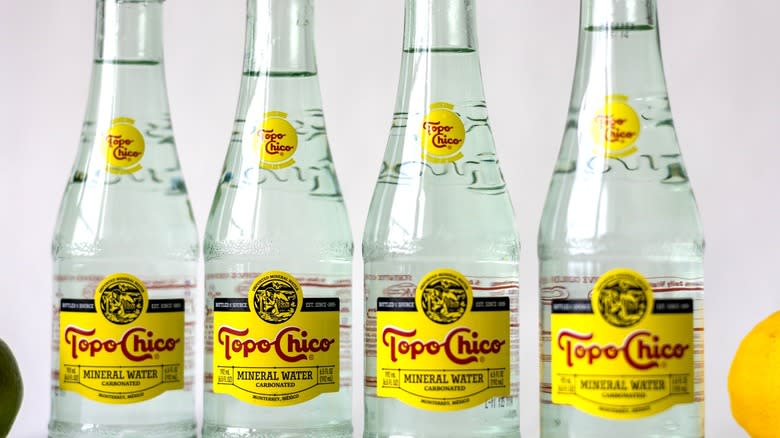
Like seltzer, sparkling water is another term that can be confusing, as it can refer to multiple types of water. So let's break them down. First, "sparkling water" can be a blanket term that refers to any and all water that has bubbles. The second definition is more specific, using the term to only refer to sparkling mineral water. Brands like San Pellegrino, Topo Chico, and Perrier fall under this category. Their waters are sourced from a specific geographical place, and the natural mineral content that the water picks up from rocks is left in, rather than filtered out. They're usually labeled with the word "mineral," to differentiate them from other types of sparkling water and seltzer, but sometimes are referred to simply as sparkling water.
These days, the term sparkling water is also used to refer to popular flavored bubbly waters like LaCroix, which is simply filtered water with added carbonation (and flavoring, unless you're drinking the plain version). This makes it, and other flavored bubbly water brands, no different from the common definition of seltzer. Despite that, they label themselves as "sparkling water," although the FDA puts them in the category of soft drinks, not bottled waters.
At a sit-down restaurant, you may be asked "still or sparkling" at the beginning of the meal. Depending on the restaurant, sparkling could refer to mineral or non-mineral water. It's always worth asking for clarification, since the term is vague and could mean either.
The Terms Are Often Used Interchangeably
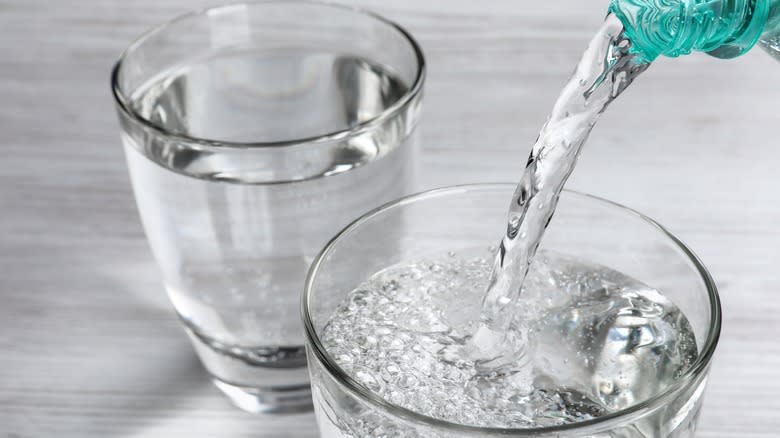
Since the definitions of the terms seltzer and sparkling water are so fluid (pun intended), it's probably not surprising that they're often used interchangeably. As seltzer originally referred to naturally sparkling mineral water, it makes sense that people still associate the word with that style. And sparkling water can be incredibly specific or quite vague in what it refers to, so there's no automatic way of knowing exactly what it means.
Adding to the confusion, hard seltzer has seen massive market growth over the last several years, so many people now associate the word seltzer with these canned alcoholic offerings. White Claw now makes a non-alcoholic version of their alcoholic seltzer, so even asking for it by brand name isn't a guarantee of what you'll end up with. Thanks to all of these multiple terms, definitions, and countless brands and varieties, it's always a good idea to be as specific as possible when purchasing or ordering anything involving bubbly water, whether it's hard or soft, brand name or generic.
Seltzer's Carbonation Is Artificial, While Sparkling Water's Bubbles May Be Natural
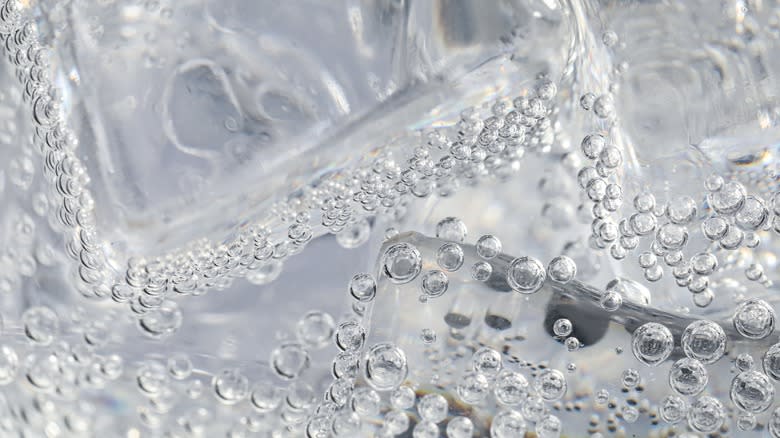
Perhaps the biggest differentiator when it comes to styles of fizzy water is how they get their bubbles. There are two main methods though which bubbly water is created: Natural carbonation and forced carbonation. As you might have gleaned from the names, natural carbonation occurs without any intervention, while forced carbonation is an artificial process. Natural carbonation occurs in water from underground aquifers that are accessed by wells or springs, typically in areas that experience volcanic activity. The carbonation comes from gasses that bubble up from the earth and dissolve into the water. These bubbles tend to be subtler than those from artificial carbonation. This type of carbonation is common in sparkling waters, particularly sparkling mineral waters.
There are many different, technically complex methods that can be used to artificially carbonate water. If you've ever used a SodaStream, you get the basics: Carbon dioxide is injected into still liquid under pressure. That pressure keeps the carbon dioxide from escaping. When the pressure is released, like when you pop open a can or twist open a bottle, bubbles are formed as that injected gas rises to the surface. The level of carbonation present can vary based on the methods used, with different levels of temperature and pressure resulting in different styles of bubbles with more or less intensity. While hundreds of years ago seltzers were naturally carbonated, today seltzers undergo artificial carbonation.
Sparkling Water May Contain Naturally Occurring Minerals While Seltzer Does Not
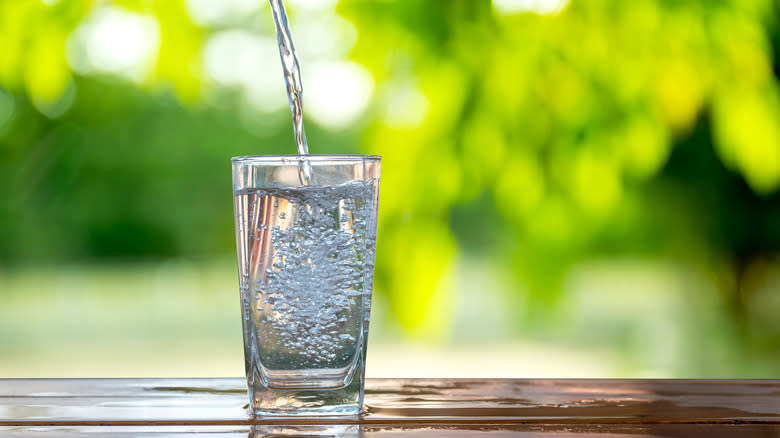
Filtered sparkling water and seltzer, which are essentially the same thing, consist of nothing but water and carbon dioxide. Sparkling mineral water, by contrast, contains a variety of minerals, typically naturally occurring, but they can also be added in the form of salts. While each brand of water is different, they usually contain some combination of calcium, chlorine, phosphorous, magnesium, potassium, sodium, and sulphur. Other micro-nutrients may be present in trace amounts as well, such as iron and flouride.
In order to be considered mineral water, the U.S. Food and Drug Administration requires these products to have a mineral content of at least 250 parts per million of what's called total dissolved solids (TDS for short), and the water must come from underground sources that are shielded from contamination. Sparkling mineral water is held to the same safety standards as all other bottled water. Seltzer and other artificially sparkling waters, on the other hand, are considered soft drinks by the FDA, so they adhere to a different set of standards.
Sparkling Waters Can Have Unique Flavor Profiles, While Seltzer Tastes Neutral
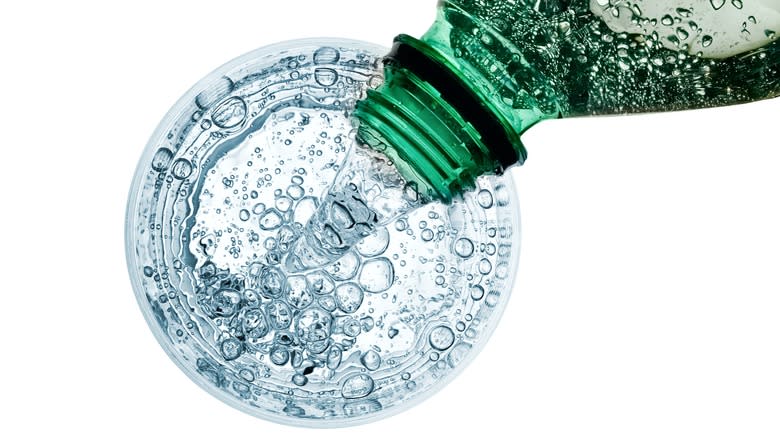
Thanks to the inclusion of minerals, sparkling mineral waters have unique tastes that differ depending on their source. One very typical flavor that shows up in sparkling mineral water is salt. In some waters, it's quite prominent, such as the famously briny Vichy Catalan from Spain, and others like Jarritos from Mexico, and Borjomi from Georgia. Some waters exhibit a rocky, chalky, or metallic flavor. Others may even come across as sweet or savory. There's a nearly infinite number of mineral combinations that can create a multitude of different flavor profiles.
Seltzer, on the other hand, is meant to be as neutral as possible. Any minerals present in the base water are filtered out. The inclusion of carbonation does add some acidity, which can make seltzer taste sour or tangy to some people. This comes from the carbon dioxide, which creates carbonic acid when combined with water. This is typically very subtle, if it's detected at all. Flavored sparkling waters are most often created from a base of filtered water, not mineral water, so that the water doesn't add its own taste which could affect the added flavorings.
Seltzer Is Commonly Used As A Cocktail Mixer Because Of Its Neutral Taste
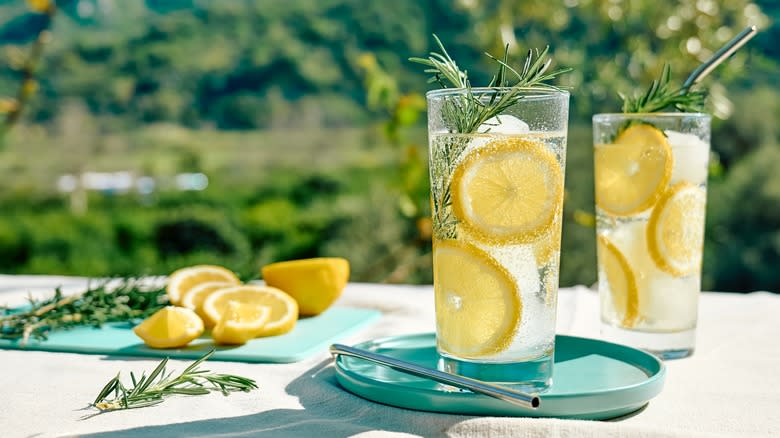
Because it's filtered to be as neutral as possible, seltzer shines as a cocktail mixer. It adds bubbles to any drink without altering the way it tastes, except for a small burst of acidity from the creation of carbonic acid — but a little acidity is usually welcome in a cocktail, and it's a small enough amount to be virtually undetectable.
This neutrality makes seltzer unique compared to other mixers, like club soda and tonic water, which have additives that alter their flavor (more detail on this later). So if you want pure bubbles without any other stuff, seltzer is the way to go. Particularly in simple two-ingredient mixed drinks, that are just the liquor and the mixer, seltzer will allow you to enjoy the true flavor of the spirit or liqueur without any adulteration — though, of course, depending on the quality of the liquor, this could be a plus or a minus.
Keep in mind, when ordering at a bar or restaurant, if you ask for, say, a vodka soda, they may make it with seltzer (a.k.a. soda water), or club soda, which is slightly different. Not all bars will have both, so it's worth asking and being specific if you have a strong preference for one or the other.
Sparkling Mineral Water Is Best Enjoyed On Its Own Or Paired With Food
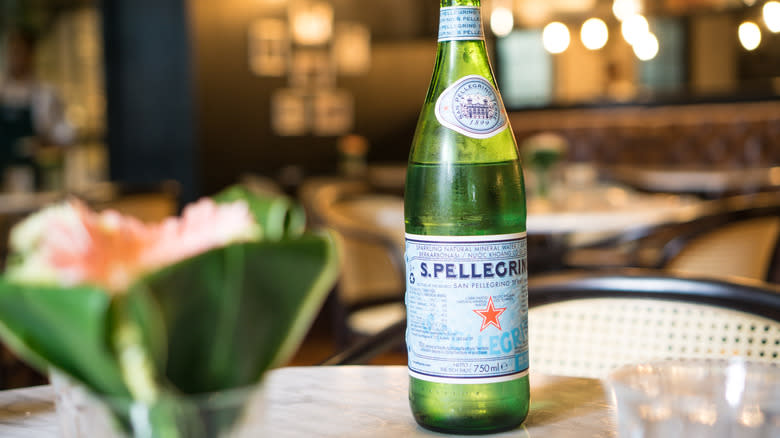
Because sparkling mineral water has a particular flavor, it doesn't work the same way that seltzer does when it comes to consumption. You can certainly use it as a cocktail mixer if you'd like, but it will impart its own qualities to whatever drink it's used in, which could add unwelcome flavors. Also, waters with natural carbonation may not have the same aggressive bubbliness as those that are injected with carbon dioxide, so mixing them with other non-sparkling ingredients can make them seem flat.
Sparkling mineral waters really shine on their own, offering their unique cool and complex flavors and bubbles. They're also, perhaps surprisingly, excellent to pair with food. Similar to pairing wine with dishes, mineral water and food can create harmonious combinations that will elevate your dining experience. Mineral waters can be analyzed in the same way as wines, taking into account the level of minerality, acidity, flavors and aromas, and other components. A water with lots of saltiness, mineral intensity, and strong bubbles could overpower a delicate dish, but might be perfect with a dry-aged burger, for example. Matching the right sparkling water with your meal can add an extra layer of gastronomical enjoyment.
Flavored Sparkling Water Works On Its Own Or As A Mixer
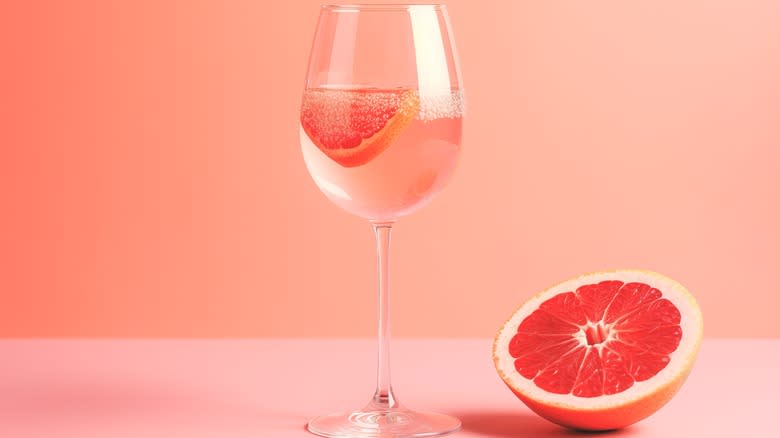
As for non-mineral sparkling waters that are infused with flavors, like the LaCroix and Waterloos of the world, they exhibit lots of versatility when it comes to how they can be enjoyed. On their own, they're fruity and refreshing and make a great substitute for plain still water if you're looking for something with a little more gusto. And worry not, studies show that sparkling water hydrates the body just as well as regular water.
These sparkling waters are also fun to use in cocktails, mocktails, and mixed drinks, where you can play around with all of the different flavors. When added to a neutral spirit like vodka, the sparkling water becomes the predominant flavor of the drink. With more intense spirits like whiskey or tequila, certain flavors will enhance them, while others may not work well at all — experiment and see what you like.
Tequila is a no-brainer with grapefruit or lime sparkling water, and peach with bourbon is a delightful match. Any tropical flavored water, like pineapple or passionfruit, makes a great partner for rum. An easy way to upgrade your Aperol spritz is to use grapefruit or orange flavored sparkling water to top it off. The combinations are endless.
Both Beverages Differ From Club Soda And Tonic Water
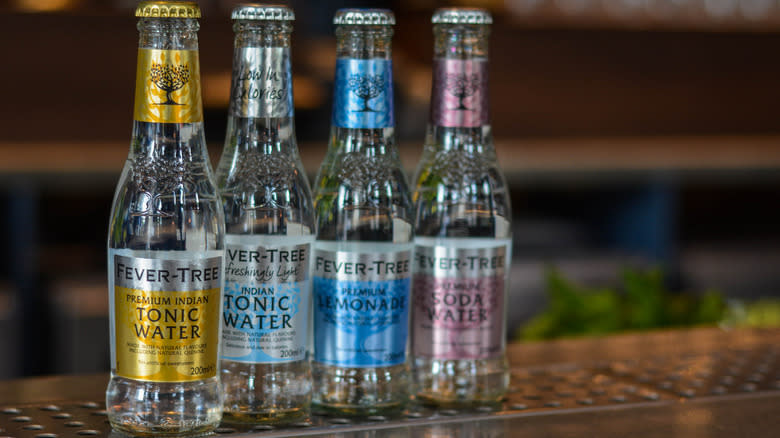
Determining the difference between seltzer and sparkling water is challenging enough, but what about all of the other types of bubbly water out there? Three common ones you'll come across at bars, restaurants, and grocery stores are soda water, club soda, and tonic water. While they can all technically fall under the umbrella of "sparkling water," there are notable differences between them.
Soda water is basically another name for seltzer, but it can also be used to refer to club soda. The fact that soda water and club soda can refer to two different liquids throws another wrench in the already overly-complex sparkling water web, but here we go. Club soda is differentiated from seltzer by the addition of salt, which makes it taste a bit more like sparkling mineral water. Salt also helps curb the acidity brought on by carbonic acid.
Tonic water is the most obviously different product taste-wise, and of all these options it's by far the furthest in flavor from plain water. The addition of quinine, an alkaloid compound harvested from the bark of the South American cinchona tree, gives it a distinctive and intense bitter flavor. This is often balanced out by the addition of sugar to make the water more palatable. Of course, tonic is most famously enjoyed with gin, and there are different flavors of tonic water that can offer tons of unique combinations with the aromatic spirit.
Do Sparkling Water And Seltzer Have Health Benefits?
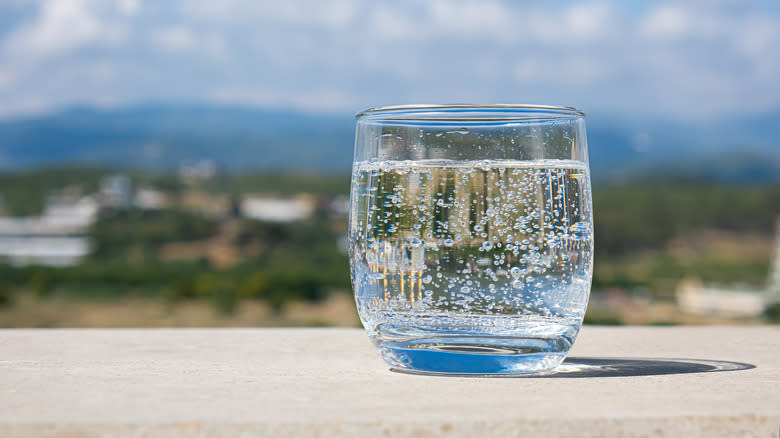
Water, of course, is necessary for health. Staying hydrated is key to ensuring your body is able to properly function, and it also may stave off diseases and other negative health outcomes. But when you're looking at how much water you need to ingest per day, you may ask yourself, do sparkling waters count towards that total? Are they more or less healthy than plain water? Thankfully for bubbly water fans, sparkling water hydrates just as well as regular still water, no matter what kind of bubbles you prefer — flavored or unflavored, filtered or mineral. Sparkling mineral water has added benefits, such as regulating cholesterol levels and helping to decrease blood pressure.
Folks with certain health concerns may need to exercise caution when drinking sparkling waters. If you're trying to avoid sodium, you'll probably want to opt for plain seltzer and stay away from club soda and mineral water. People with gastrointestinal issues, such as acid reflux and gastritis, may want to avoid carbonation altogether, as it can exacerbate these problems. Since carbonation does make water more acidic, drinking too much of it can eventually harm the enamel on your teeth, so it's best to keep tap water in the rotation to ensure you are getting enough fluoride to counteract this. Overall, though, aside from these few issues, reaching for a can or bottle of sparkling water — especially if it helps you avoid sugary drinks — is a healthy choice.
Read the original article on The Daily Meal


